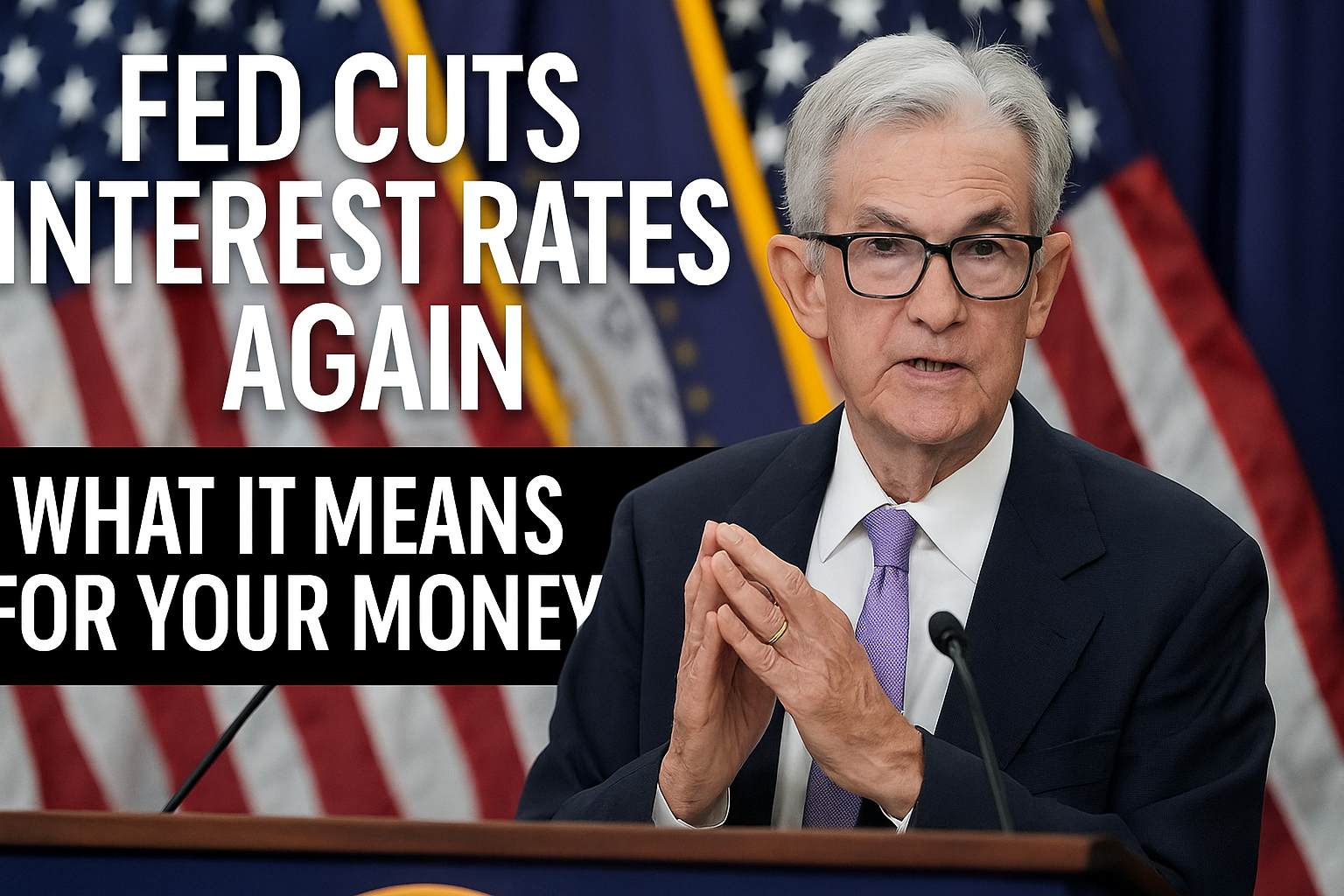Introduction
The Federal Reserve has once again made headlines by cutting interest rates the second time this year. This decision aims to support the U.S. economy amid slowing growth and global uncertainties. But what does this mean for your wallet? From loans to savings, the ripple effects of this move will impact nearly every American.
Why the Fed Cut Rates Again
The Fed’s primary goal is to keep inflation in check while promoting stable employment and economic growth. As global markets face rising uncertainty and inflation cools, the central bank decided another rate cut was necessary.
Economic Slowdown and Inflation Concerns
Recent data revealed a gradual slowdown in both consumer spending and business investments. Meanwhile, inflation rates have eased closer to the Fed’s 2% target, prompting policymakers to lower rates to stimulate economic activity.
Lower interest rates encourage borrowing and spending, helping to inject momentum into an economy that’s losing steam. However, this move also raises concerns about long-term inflation and the potential devaluation of the U.S. dollar.
How This Impacts Consumers
Cheaper Loans and Credit
If you’re planning to buy a home or car, now may be a good time. Lower rates often translate to reduced borrowing costs, meaning cheaper mortgage and loan rates. Credit card interest rates could also dip slightly, easing financial pressure for many consumers.
Lower Savings Yields
On the flip side, savers might feel the pinch. Banks are likely to lower interest rates on savings accounts and certificates of deposit (CDs). This means your money might grow slower than before.
Stock Market Boost
Investors generally view rate cuts positively. Cheaper borrowing fuels corporate growth, which can drive stock prices higher. However, markets remain volatile, and investors should stay cautious.
Global and Business Implications
The rate cut sends a strong message to international markets: the U.S. is ready to act to maintain growth. It could ease global financial tensions, especially for emerging markets dependent on U.S. trade and investment. Businesses, especially small ones, may benefit from reduced loan costs, encouraging expansion and job creation.
Conclusion
The Federal Reserve’s second rate cut this year underscores a strategic effort to sustain economic momentum amid uncertainty. For consumers, it presents both opportunities and challenges — lower borrowing costs but reduced savings yields.
In the bigger picture, this move highlights the Fed’s commitment to stabilizing growth and maintaining confidence in the U.S. economy. Staying informed about such financial shifts can help you make smarter money decisions in a rapidly changing world.
Call to Action:
Review your current loans, savings plans, and investments. Consult a financial advisor to adapt your strategy in response to the new interest rate environment.


